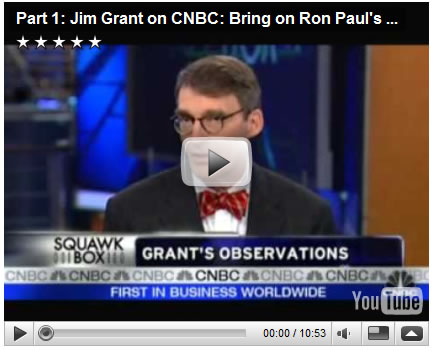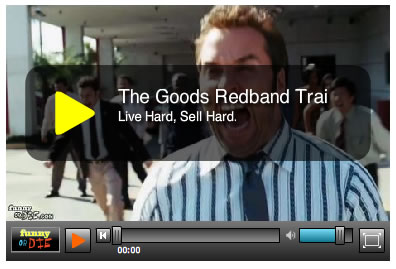Stocks Almost Back In Black
Stock-Markets / Financial Markets 2009 Jun 12, 2009 - 05:06 AM GMTBy: PaddyPowerTrader
 The AC/DC-like comeback since March 9th was almost complete, as the Dow Jones climbed 140 points early on yesterday on the back of better than expected retail sales numbers, a fall in jobless claims (though continuing claims climbed ever higher), a successful 30 year Treasury bond auction and a bullish cross in the 200 and 30 day moving averages. But Boeing lowering it’s 20 year forecast for the commercial plane market for the first time in a decade, oil topping $73 barrel (on an IEA report predicting rising demand) and tech and consumer discretionary stock weakness dragged the major indices back down, resulting in the Dow only registering a 32 point gain. I preferred Bon Scott anyway.
The AC/DC-like comeback since March 9th was almost complete, as the Dow Jones climbed 140 points early on yesterday on the back of better than expected retail sales numbers, a fall in jobless claims (though continuing claims climbed ever higher), a successful 30 year Treasury bond auction and a bullish cross in the 200 and 30 day moving averages. But Boeing lowering it’s 20 year forecast for the commercial plane market for the first time in a decade, oil topping $73 barrel (on an IEA report predicting rising demand) and tech and consumer discretionary stock weakness dragged the major indices back down, resulting in the Dow only registering a 32 point gain. I preferred Bon Scott anyway.
Today’s Market Moving Stories
- Chinese retail sales for May showed that annual sales growth was broadly steady at 15.2%. This is an improvement on February’s low of 11.6%, although growth was running at over 20% for most of last year. China industrial production came in line with leaked reports, as output grew by 8.9% over the past year, which is up from a low of 5.4% in November.
- The 30 year US Treasury bond auction drew strong demand, with indirect bidders taking a very high 49% of the auction. US Treasuries rallied in the aftermath of the auction to end the session close to highs. Japanese finance minster Yosano said that Japan’s trust in US Treasuries remains “unshakable adding to the bid”.
- The improved tone in bond markets was boosted by cautionary comments from the Fed’s Lacker and economic adviser and ex-Fed Chairman Volcker. The former emphasised downside risks to his central forecast of an extended period of sluggish growth, with commercial real estate, doubts about the global economy, and the threat to fragile consumer confidence posed by the ongoing need for deleveraging and excessive debt all giving grounds for concern. The latter warned that any recovery will be protracted and difficult, with continuing high levels of unemployment.
- The WSJ pours cold water on any resurgence of Fed buying of Treasury bonds. Unfortunately for bond bulls, the paper claims “divisions are brewing within the Fed over whether it should do more to speed the healing, pause, or start pulling back to avoid an outbreak of inflation.” Effectively, a resolute and cohesive Fed, with a clearly defined exit strategy, would reassure bond holders. Today’s elevated yields are in part a reflection of the FOMC’s efforts to communicate a convincingly on how it might exit Quantitative Easing - so far.
- Eurozone economic forecasts are getting more pessimistic. The ECB yesterday released a relatively sceptical assessment for the next 18 months, where they said that there will be no recovery in the euro area this year, not even stabilisation. In the second half this year, the recession will continue at reduced speed. The economy will stabilise during the first half of 2010, and then start to grow again. With this forecast, the ECB has shot down the green shoots theory. Germany’s Institute for International Economics in Kiel revised its own growth forecast for Germany this year downward yet again to -6% and expect quasi stagnation for 2010, but this assumes no more banking stress (which again is a very optimistic premise). Notably, the institute, which has a monetarist tradition, criticises the ECB for being too cautious in its monetary policy. It should cut interest rates to 0.5%, and undertake more Quantitative Easing.
- The Eurovision blame game gets into the next phase. Britain’s finance minister Alistair Darling told the FT in an interview that Britain’s difficult economic situation was aggravated by the failure of other European countries to clean up their banking mess. The article claimed that Mr Darling did not cite any names, but an unnamed UK Treasury official was at hand to say that Mr Darling was referring to Germany, Sweden and Spain. Darling said these countries were turning a blind eye to the problem, and failed to follow Britain’s lead in indentifying toxic assets and recapitalising institutions.
- Barclays has finally sold off the family silver to keep it from taking the Queens schilling. Blackrock has agreed to buy Barclays investment unit for $13.5bn, with $6.6bn in cash up front and with the balance paid in stock. The price is higher than previous estimates of $10bn-$13bn. Barclays will hold a 19.9% stake in the combined company which is set to oversee some $2.7 trillion in assets. Financing for the deal will include $2.8bn from sovereign wealth funds and over $2bn in loans from a number of bankers including Barclays. CEO of Blackrock described the deal as “transformational” (I reach for my Oxford English Dictionary). The deal is set to realise a net gain of $8.8bn which would be used to bring the bank closer in line with FSA tier 1 expectations, with the current core tier 1 ratio now said to be 8.3%. Finally, in comments released this morning, Barclays say that trading through May has been “consistent” with its previous indications. Barclays shares have opened soft, down about 2%.
- The whacky world of credit default swaps (recall the Sage of Omaha once called them weapons of mass destruction). James Hamilton of Econbrowser narrates the story.
- Things are tough when strip clubs are trimming upscale offerings as business slumps.
Reasons To Be Careful Out There This Summer
As the last remaining member of the glass half empty club, I thought I’d set out what I think are the key RISKS to the rose tinted glass half full play which is in vogue:
- The ‘V’ pricing. Not everything is yet pricing in a ‘V’ shaped recover of course, but increasingly more indicators are getting there and the rise in equities and other risk-assets from the March lows is increasingly ‘V-esque’. But once the V has been fully priced (and I accept we are not quite there yet) then there isn’t really anywhere else to go.
- Quantitative Easing creating other tail risks. QE from the Fed and others is a necessary cure for the fact that theoretically, the depth of the recession requires below 0% interest rates. That does not mean it is without risks and three (inter-linked) tail-risks stand out: large dollar devaluation, huge inflation creation and reduction of faith in paper money.
- Data surprises waning. April and the first half of May saw some stunningly impressive positive data surprises. These have continued right up until last Friday’s nonfarm payrolls and doubtless there will be more ahead. Nevertheless, they are becoming less broad-based as economists inevitably catch their forecasts up to the better actual data, and we approach the time when upside surprises are no more common than downside.
- Sovereign Credit Default Swaps spreads rising. A simple average of G7 CDS collapsed from 125bp to 47bp between March and May, but has since retraced back up to 60bp. If the market starts to believe the public sector cannot deal with these risks, then equities and credit will sell-off aggressively.
- Pricing in Fed hikes. Partially reversed yesterday but a worrying move to try and price in some chance of Fed hikes in 2009. I do not believe growth will be strong enough to justify this, so is the market worrying that inflation concerns will force the Fed’s hand?
- Higher private sector interest rates. The govvie sell-off since March has been accompanied by a tightening of spreads leaving corporate and mortgage rates broadly unchanged. In the last few days, mortgage and corporate rates have shot up in line with Treasuries as spreads have stayed flat. Rising private sector interest rates are unambiguously bad for risk.
- Higher commodity prices. Linked to the rally in risk and the fall in the Dollar is rising commodity prices. For the Western world, this is bad news on both the inflation and growth fronts. As long as it is only when risk is rising (i.e. a demand story) then rising commodity prices are not too much of a worry. If, however, it is a supply story, in that production was cut so hard in Q4/Q1 then it is bad news.
- Central and Eastern Europe contagion not going away. More a European problem than anything else, but hopes that the IMF deal had sorted Eastern Europe for good are being slowly eroded, most recently by Latvia devaluation concerns. This story can continue to roll.
- Seasonals. S&P 500 seasonal patterns from the past 20 years are clear; slight sell-off in Q1, big rally in Q2, even bigger sell-off in Q3 and rally back in Q4. That is (kind of) the pattern we followed last year. Is it the one we are following this year?
- More speculative issues. Geopolitical concerns (think North Korea, Iran, Pakistan) continue to rumble. The WHO is upgrading swine flu to a pandemic, after a sharp increase in cases in Australia. This could well be an issue as we go into the Northern Hemisphere winter as well. And let’s not forget hurricane season in the US (runs from June to November). The NOAA forecasters predict a 70% chance of 9-14 named storms, of which 4-7 could become hurricanes of which 1-3 could be major hurricanes.
Any or more of the problems listed above could be the catalyst for a decent sell-off in risk over the next month or two.
Data Ahead Today
Euro area industrial production in April is released at 10:00. Output should fall by 0.4%, which would be the smallest decline since August 2008.
At 13:30 US import prices for May are out. Prices should rise by 1.4%, which is another solid increase after a string of large falls over recent months. US Michigan consumer confidence for June is released at 15:00. Consistent with a slew of indicators that have returned to their pre-Lehman levels, consumer sentiment should rise to 69.5.
Jim Grant, Chairman Of The Fed Fan Club, Not
And Finally… Maybe GM Should Have Hired This Guy As CEO
Disclosures = None
By The Mole
PaddyPowerTrader.com
The Mole is a man in the know. I don’t trade for a living, but instead work for a well-known Irish institution, heading a desk that regularly trades over €100 million a day. I aim to provide top quality, up-to-date and relevant market news and data, so that traders can make more informed decisions”.
© 2009 Copyright PaddyPowerTrader - All Rights Reserved
Disclaimer: The above is a matter of opinion provided for general information purposes only and is not intended as investment advice. Information and analysis above are derived from sources and utilising methods believed to be reliable, but we cannot accept responsibility for any losses you may incur as a result of this analysis. Individuals should consult with their personal financial advisors.
PaddyPowerTrader Archive |
© 2005-2022 http://www.MarketOracle.co.uk - The Market Oracle is a FREE Daily Financial Markets Analysis & Forecasting online publication.





